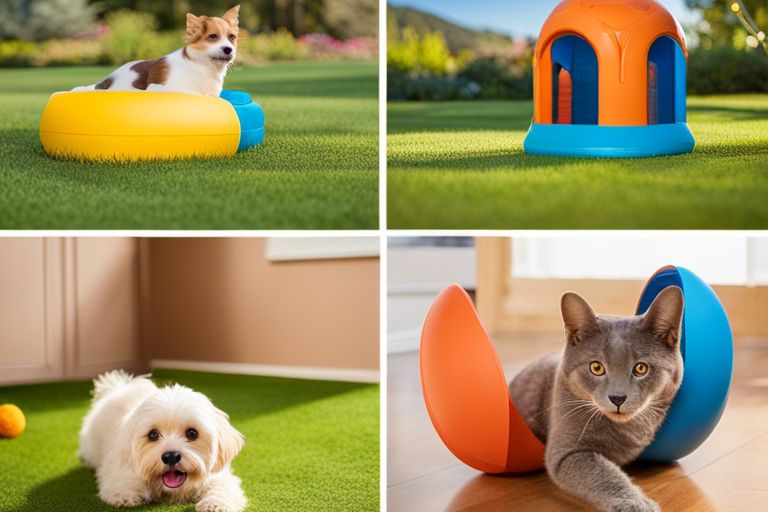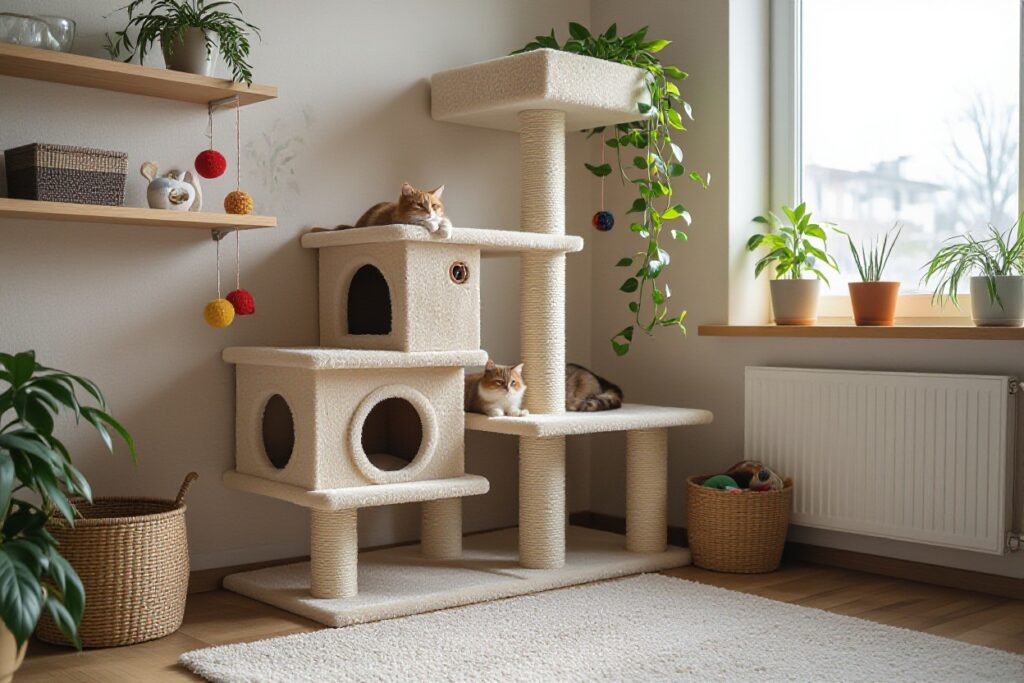Pet owners often find themselves facing the dilemma of choosing the right toys for their furry companions. While the market offers a wide variety of options, it’s important to understand that not all toys are suitable for every pet’s lifestyle. Factors such as living arrangements, activity levels, and access to outdoor space all play a role in determining the most appropriate toys for your pet. In this blog post, we will delve into the differences between indoor and outdoor pet toys, and how to cater to different lifestyles to ensure your pet’s happiness and well-being.
The distinction between indoor and outdoor pet toys is crucial when it comes to providing suitable entertainment for your furry friend. Indoor pets, such as cats and some small dog breeds, may have limited access to outdoor space and therefore require toys that cater to their need for mental and physical stimulation within the confines of their home. Conversely, outdoor pets, like large dog breeds and some birds, thrive on toys that encourage physical activity and exploration in a larger, open space. By understanding the distinct needs of indoor and outdoor pets, you can select the right toys to keep your pet engaged and fulfilled.
Key Takeaways:
- Understanding pet lifestyles: Indoor and outdoor pet toys cater to the different needs and lifestyles of pets, recognizing their various preferences and behaviors.
- Consideration of space and environment: Indoor pet toys are designed to accommodate limited indoor spaces, while outdoor pet toys are built to withstand different weather conditions and outdoor environments.
- Mental and physical stimulation: Both indoor and outdoor pet toys are essential for providing mental and physical stimulation to keep pets active and engaged, promoting overall well-being.
- Safety and durability: Outdoor pet toys are engineered to withstand varying outdoor elements, while indoor pet toys are crafted with materials safe for home environments, considering the safety of pets and homes.
- Engagement and bonding: Choosing the right pet toy, whether indoor or outdoor, fosters engagement and bonding opportunities between pets and their owners through interactive play and training exercises.
- Lifestyle-specific considerations: Understanding the differing needs of indoor and outdoor pets allows pet owners to select appropriate toys to enhance their pet’s lifestyle and promote a healthy and fulfilling routine.
- Options for versatility: Offering a variety of indoor and outdoor pet toys provides pets with diverse experiences and opportunities for exploration, ensuring their needs are met wherever they may be.
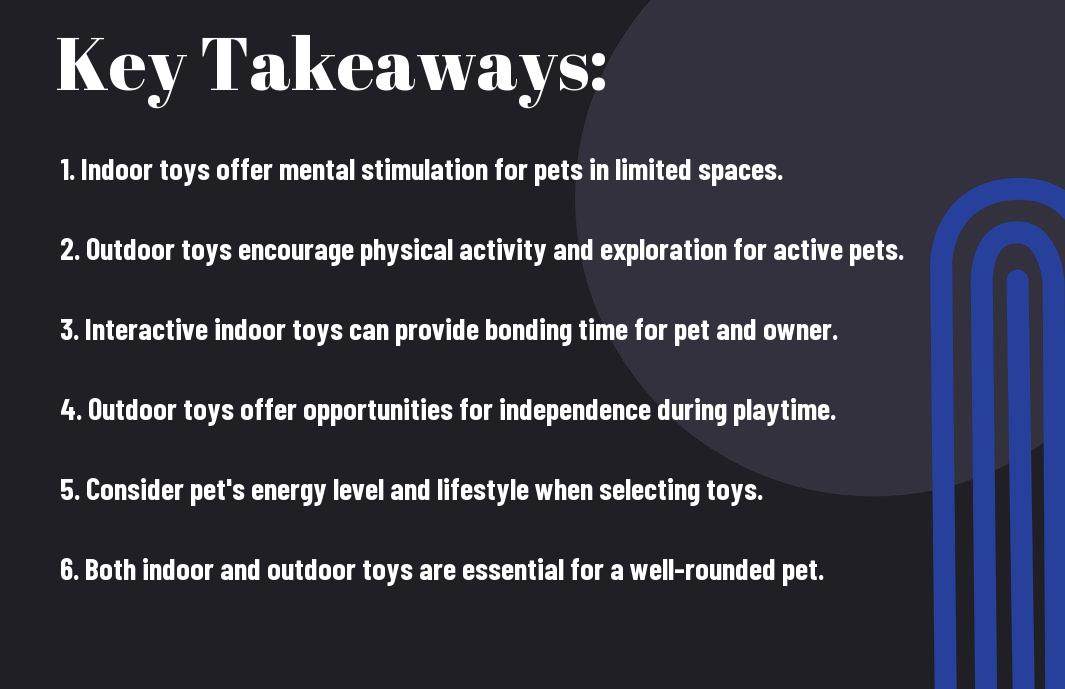
Understanding Pet Play Needs
One of the most important aspects of pet ownership is understanding and meeting your pet’s play needs. Different pets have different play styles and stimulation requirements, and as a responsible pet owner, it’s essential to cater to these needs to ensure the overall well-being and happiness of your pet.
Importance of Play for Pets
To understand the importance of play for pets, it’s crucial to recognize that play is not just a recreational activity for them. It is a vital component of their physical and mental health. Play helps pets to stay physically active, maintain a healthy weight, and prevent obesity-related health issues. Moreover, it supports their cognitive development, relieves stress, and strengthens the bond between pets and their owners.
Variations in Play Styles and Stimulation
The variations in pet play styles and stimulation are diverse and unique to each pet. Cats, for example, are natural hunters that engage in stalking, pouncing, and chasing activities. On the other hand, dogs often enjoy running, fetching, and interactive games with their owners. Understanding these variations will help in selecting the right toys and activities to meet your pet’s specific play needs.
For instance, some pets might prefer toys that encourage mental stimulation, such as puzzles or treat-dispensing toys, while others might thrive on physical activities like tug-of-war or fetch. Recognizing these differences and providing the appropriate toys and activities will ensure that your pet remains engaged and fulfilled.
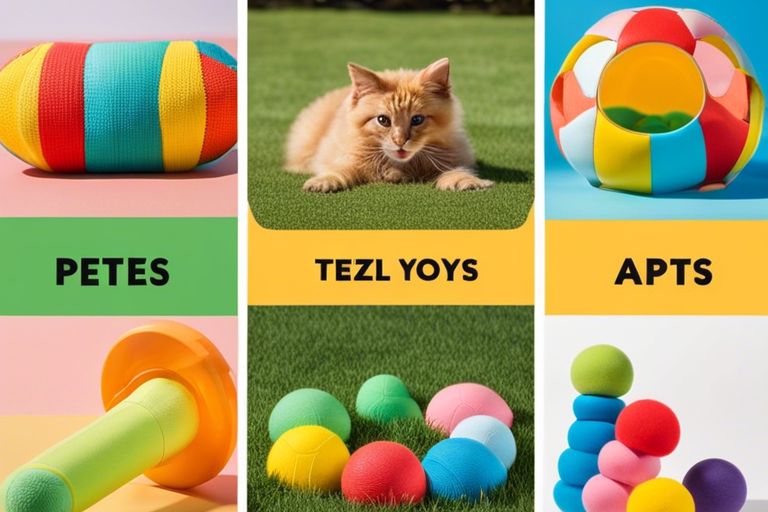
Indoor Pet Toys: Selection and Safety
To cater to the unique needs of indoor pets, it’s essential to select toys that provide mental and physical stimulation while ensuring the safety of the pet and the home environment.
Characteristics of Quality Indoor Toys
Selection of indoor toys should prioritize durability, as pets tend to spend more time indoors and engage in frequent play. Look for toys made from high-quality materials that can withstand regular use without posing a choking or ingestion hazard. Additionally, consider toys that encourage mental stimulation, such as puzzle toys or interactive feeders, to keep indoor pets engaged and entertained.
Safety Considerations for Indoor Play
On top of durability, safety is a key consideration when choosing indoor toys for pets. Opt for toys that are free from small, detachable parts that could be swallowed, and avoid toys with sharp edges or toxic materials. Regularly inspect toys for signs of wear and tear, and promptly replace any damaged toys to prevent potential harm to the pet.
Plus, always supervise playtime with toys to ensure the pet’s safety, and consider rotating toys to prevent boredom and maintain interest.
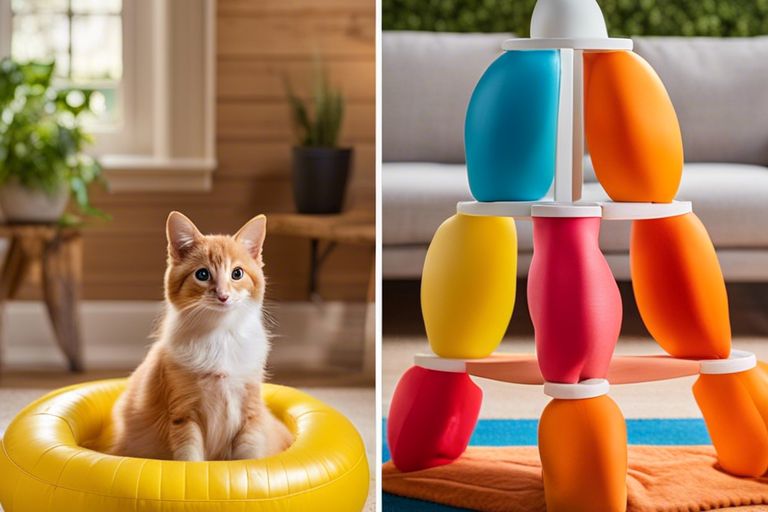
Outdoor Pet Toys: Durability and Function
Not all pet toys are created equal, especially when it comes to outdoor toys. Outdoor pet toys need to withstand the elements and provide the function and durability necessary for active play in the great outdoors. Understanding the features and ensuring the longevity of outdoor pet toys is essential for catering to the needs of pets with an outdoor lifestyle.
Features of Outdoor Pet Toys
An important aspect of outdoor pet toys is their ability to withstand the elements. This may include being waterproof, UV resistant, and made from durable materials such as rubber, nylon, or heavy-duty plastic. Additionally, outdoor pet toys often have features that cater to different types of play, such as throwing, tugging, or retrieving, to keep pets engaged and active.
Ensuring Longevity of Outdoor Toys
Toys designed for outdoor play need special care and maintenance to ensure their longevity. It is important to regularly inspect outdoor pet toys for any signs of wear and tear, such as fraying, cracking, or weak spots. Proper cleaning and storage after use can also help prolong the lifespan of outdoor toys, protecting them from damage caused by exposure to the elements.
Toys that are well-crafted and designed to withstand the rigors of outdoor play can provide pets with hours of entertainment and exercise, promoting physical and mental well-being. By understanding the features and taking proactive measures to ensure the longevity of outdoor pet toys, pet owners can cater to the needs of their outdoor-loving pets and create a safe and enjoyable play environment.
Catering Toys to Pet Lifestyles
After considering the specific lifestyle and needs of your pet, it is important to choose toys that cater to their individual requirements. Whether your pet is active and requires interactive play, or they have limited outdoor access and need more stimulating indoor toys, there are options available to keep them entertained and engaged.
Toys for Active Pets and Interactive Play
Toys for active pets should focus on promoting physical activity and mental stimulation. Interactive toys such as puzzle feeders, treat dispensing balls, and tug-of-war ropes are great options for pets that thrive on engagement and play. These toys encourage movement and problem-solving skills, providing an outlet for their energy and curiosity. Incorporating a variety of toys that promote physical activity and mental stimulation can help satisfy the needs of active pets and contribute to their overall well-being.
Toys for Pets with Limited Outdoor Access
Toys for pets with limited outdoor access should be designed to provide mental stimulation and entertainment within the confines of the home. These pets may benefit from toys that offer interactive features, such as electronic laser pointers, feather wands, and puzzle toys. These toys can help simulate outdoor activities and provide mental enrichment, particularly for pets that spend the majority of their time indoors. Additionally, incorporating toys that encourage independent play can help alleviate boredom and provide a source of entertainment for pets with limited outdoor access.
Access to stimulating toys and activities is essential for pets with limited outdoor access, as it helps prevent boredom and promotes overall well-being. By providing engaging toys and interactive play opportunities, pet owners can ensure that their pets remain mentally and physically stimulated, even when indoor space is limited.
Pet Toys and Owner Participation
Unlike humans, pets rely on their owners to provide them with toys and engage in play as a means of mental and physical stimulation. The type of toys and the level of owner participation can significantly impact a pet’s overall well-being and behavioural development.
The Role of the Owner in Play
Owners play a crucial role in their pet’s playtime. They are responsible for selecting appropriate toys that match their pet’s size, age, and activity level. Furthermore, owners are also accountable for supervising play to ensure their pet’s safety and to encourage positive behaviour. The interaction between a pet and their owner during playtime not only provides physical exercise but also stimulates the pet’s mind and strengthens the bond between them.
Building a Bond Through Play
Owners should view playtime as an opportunity to build and strengthen the bond with their pet. By participating in interactive play and providing their pet with toys, owners can communicate affection and care. This shared experience helps in establishing trust and increasing the emotional connection between the pet and the owner. Regular play sessions can also serve as a form of enrichment, providing mental stimulation and reducing stress or anxiety in pets.
Maintenance and Hygiene of Pet Toys
Keep your pet’s toys clean and well-maintained to ensure their health and safety. Whether you have indoor or outdoor pet toys, proper maintenance and hygiene are essential to prevent the spread of bacteria and germs.
Cleaning and Caring for Indoor Toys
On a regular basis, thoroughly clean your indoor pet toys with mild soap and water to remove dirt, saliva, and other residues. Use a pet-friendly disinfectant to sanitize the toys, and make sure to dry them completely before returning them to your pet. Additionally, regularly inspect indoor toys for wear and tear, and promptly replace any damaged or broken toys to avoid potential hazards to your pet.
Maintenance Tips for Outdoor Toys
Toys that are left outdoors are more susceptible to dirt, mold, and other contaminants. It’s important to regularly clean outdoor pet toys, such as balls, frisbees, and ropes, by washing them with soap and water. Store outdoor toys in a covered area to protect them from the elements and minimize exposure to environmental hazards. After cleaning, allow the toys to air dry before letting your pet play with them. Lastly, regularly check outdoor toys for signs of damage or deterioration, and discard any toys that pose a risk to your pet’s safety.
- Regularly wash outdoor pet toys with soap and water
- Store outdoor toys in a covered area
- Regularly inspect outdoor toys for wear and tear
Maintenance Tips for Outdoor Toys
- Regularly wash outdoor pet toys with soap and water
- Store outdoor toys in a covered area
- Regularly inspect outdoor toys for wear and tear
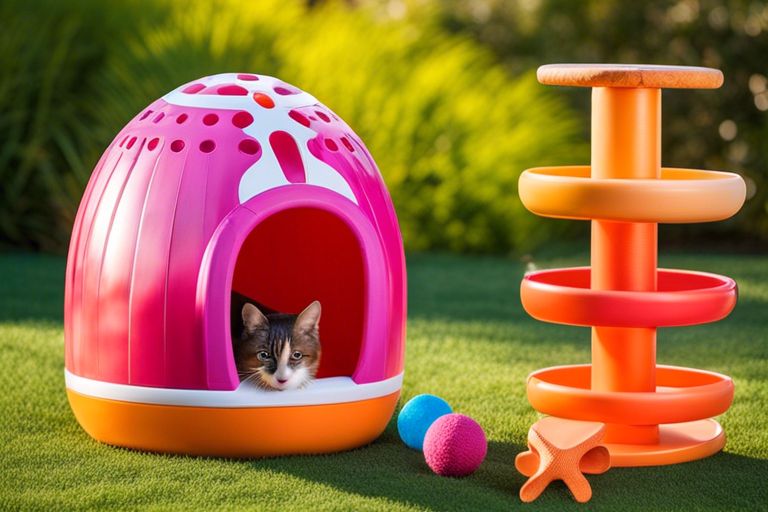
Indoor Vs Outdoor Pet Toys – Catering To Different Lifestyles
Presently, it is important for pet owners to understand the different needs of their pets based on their lifestyle. Indoor and outdoor pet toys cater to these specific needs, providing mental and physical stimulation for pets in different environments. By providing a variety of toys that cater to both indoor and outdoor settings, pet owners can ensure that their furry friends are happy, healthy, and entertained, regardless of where they spend their time.
Ultimately, the choice between indoor and outdoor pet toys should be based on the specific needs and environment of the pet. Understanding the benefits of both types of toys and catering to the lifestyle of the pet will ultimately result in a happier and healthier pet. It’s all about providing the right kind of stimulation and enrichment to ensure that pets are getting the most out of their playtime, whether it’s indoors or outdoors.
Indoor Vs Outdoor Pet Toys – Catering To Different Lifestyles FAQ
Q: What are the differences between indoor and outdoor pet toys?
A: Indoor pet toys are typically designed for quieter, gentler play, usually without the need for much space. Outdoor pet toys, on the other hand, are often more durable and built for active play in larger open spaces.
Q: Are there specific safety concerns to consider for indoor and outdoor pet toys?
A: Yes, for indoor pet toys, it’s important to choose toys that won’t cause damage to furniture or pose a choking hazard. For outdoor toys, durability and safety in varying weather conditions are key considerations.
Q: How can I choose the right toys for my pet’s lifestyle?
A: Consider your pet’s energy level and play preferences. For indoor pets, look for interactive toys that can be used in a limited space. For outdoor pets, choose toys that encourage active play and can withstand outdoor elements.
Q: Can indoor toys be used outdoors and vice versa?
A: Some indoor toys may be suitable for outdoor use, depending on the material and design. However, outdoor toys are typically more versatile and can be used indoors as well. It’s important to still consider safety and potential damage to indoor surfaces.
Q: Are there any specific recommendations for certain types of pets when it comes to indoor and outdoor toys?
A: Yes, for example, cats may prefer interactive indoor toys that mimic hunting behavior, while dogs may benefit from outdoor toys that promote physical activity and mental stimulation. Small pets like rabbits and guinea pigs may enjoy a mix of both indoor and outdoor toys that cater to their specific needs.
